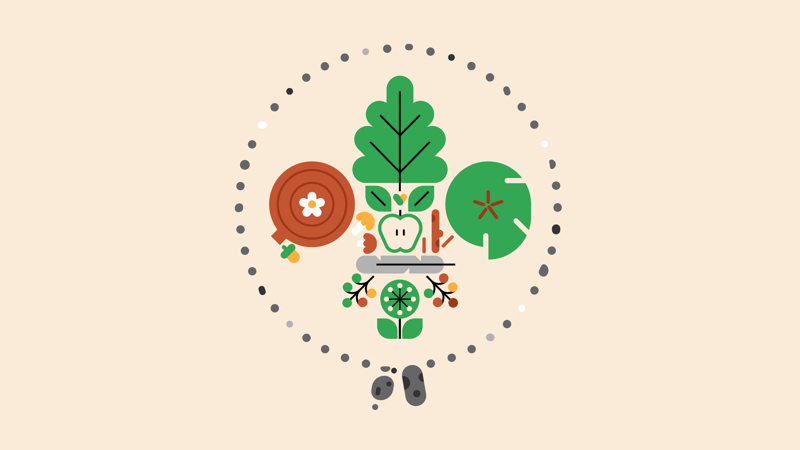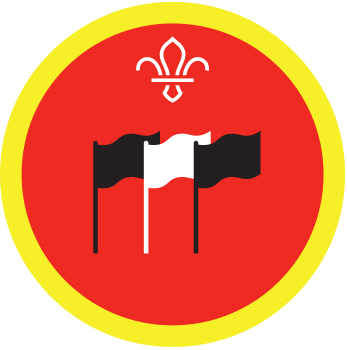
Make a nature World Membership Badge
You’ll need
- Natural materials (for example, leaves, twigs, feathers)
Head over to our Heritage website to learn more about this famous icon.
Before you begin
- Use the safety checklist to help you plan and risk assess your activity. Additional help to carry out your risk assessment, including examples can be found here. Don’t forget to make sure all young people and adults involved in the activity know how to take part safely.
- Make sure you’ll have enough adult helpers. You may need some parents and carers to help if you’re short on helpers.
Preparing for your art attack
- Gather enough examples of the Scout emblem for everyone to have one each. You could print these off or everyone could use the badge on their uniform.
Make your badges
- Split into small groups, and give each group a copy of 'The Scout emblem'. Explain that this is the World Membership Badge, worn by Scouts all over the world. Everyone should recognise this as the Membership Award they wear on their uniform.
- Groups should head outside and spend five minutes gathering natural materials, such as leaves, twigs, and stones. If you’re working inside, bring in some materials and separate them into individual piles before the session.
- Everyone should use the materials they’ve gathered to recreate the World Membership Badge. They should include as many parts of the badge as they can.
- Once all the groups have created their World Membership Badges, use the image to talk about each part. Ask the groups what they used to create each part, and if they know what it means, then explain its meaning.
- Groups should talk about why it’s good to be part of a world family of Scouts. Once every team has one or two ideas, everyone should join together and share their thoughts from a safe distance.
- People might suggest that it allows us to connect with Scouts across the world, learn about other countries and cultures, and make a big difference to the world.
Reflection
Creating the World Membership Badge, and understanding what each part means, needed people to respect and trust others in your team.
How did people decide which materials to choose? What did they do when different people had different ideas? Did they trust other people to make different parts of the badge?
Did this activity also help people respect and trust Scouts across the world, who share the same Membership Award?
What sorts of things do all Scouts have in common? How would people feel if you saw someone in another country wearing the badge?
This activity also reminded everyone that they’re local, national and international citizens. People all across the world wear the same badge – how does that make people feel?
What can the World Membership Badge teach people about citizenship? For example, service to others reminds people of their responsibilities as citizens and the encircling rope shows that everyone’s connected.
Safety
All activities must be safely managed. You must complete a thorough risk assessment and take appropriate steps to reduce risk. Use the safety checklist to help you plan and risk assess your activity. Always get approval for the activity, and have suitable supervision and an InTouch process.
Instead, you could ask everyone to recreate the 'World Membership badge' based on the one they’re wearing. Don't show them ‘The Scout emblem’ sheet until they've crafted their own.
Next, ask the groups which element of their creation represents. For example, ask: ‘Which part of the badge of you think symbolises the 10 parts of the original Scout Law?’
Make it accessible
All Scout activities should be inclusive and accessible.

